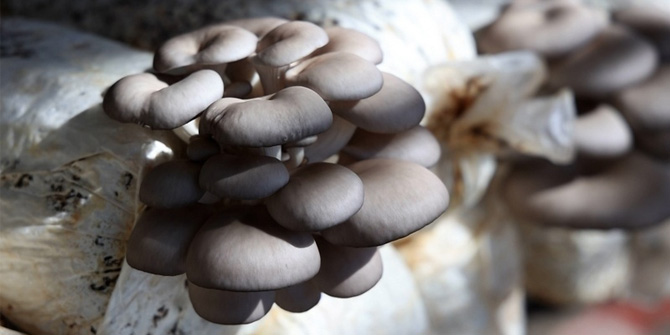Three Reasons Why Edible Fungi Are Slow To Turn Tide

The transformation of edible fungi from mycelium to fruiting body requires a process, so the characteristics of mushroom production are multiple tides and batches. If the environment is suitable and the nutrition of the mushroom bag is guaranteed, the tide will turn quickly and the yield of the next tide mushroom will be high. If the next tide mushroom is slow to produce, you need to consider the following reasons (taking Oyster mushroom as an example):
1. Are the temperature and humidity appropriate?
Temperature and humidity are the primary factors affecting the speed of the tidal change of oyster mushrooms and the quality of mushroom production. It is crucial to accurately set the temperature range in the mushroom shed according to the temperature characteristics of the cultivated oyster mushroom varieties. Too high or too low temperature will inhibit the activity of mycelium and delay the tidal change process.
Solution:
Pay close attention to weather forecasts, flexibly adjust ventilation and insulation measures to ensure that the temperature in the mushroom shed is appropriate.
At the same time, keep the relative humidity of the air in the mushroom shed at around 85% to maintain the moisture balance of the mushroom bags and prevent moisture loss.
During the tidal change period of oyster mushrooms, it is particularly necessary to strengthen the monitoring of humidity. Once the moisture content of the mushroom bags is found to be lower than 50%, water replenishment measures should be taken in time to ensure that the mycelium has sufficient growth medium.
2. Whether the culture medium is nutritious enough?
The nutritional status of the culture medium is directly related to the yield and quality of the fruiting body. When the yield of the first wave of mushrooms is high, it means that the mycelium has consumed a large amount of nutritional reserves, which may lead to a decrease in the fruiting capacity of subsequent waves.
Solution:
Reasonably control the harvest volume of the first wave of mushrooms to avoid over-picking and ensure the smooth fruiting of subsequent waves.
Adopting a scientifically proportioned matrix formula and adding appropriate nutrients to the mushroom bag in time after the first wave of mushrooms are harvested can improve the nutritional structure in the mushroom bag, make the mushroom bag fully nutritious, and effectively improve the continuous fruiting capacity of the mushroom bag.
In the process of preparing the culture medium, attention should be paid to the balanced combination of nutrients such as carbon-nitrogen ratio, mineral elements and vitamins to lay a solid foundation for the healthy growth of mycelium.
3. Strategies for coping with seasonal changes
Seasonal changes have a significant impact on the growth of oyster mushrooms. Some varieties show strong adaptability in specific seasons, but may encounter growth difficulties when the seasons change.
Solution:
In response to this problem, growers need to understand the adaptability characteristics of the selected varieties in advance and formulate corresponding cultivation plans based on local climate conditions.
Before the seasonal change, measures such as strengthening the insulation, cooling and ventilation of the mushroom sheds are used to minimize the impact of the external environment on the microclimate inside the mushroom sheds. At the same time, the cultivation density and harvesting time should be reasonably adjusted to avoid concentrated mushroom production during high or low temperature seasons to reduce the nutritional pressure and growth burden on the mushroom bags.

(1)(1).jpg)
 CONTACT
CONTACT